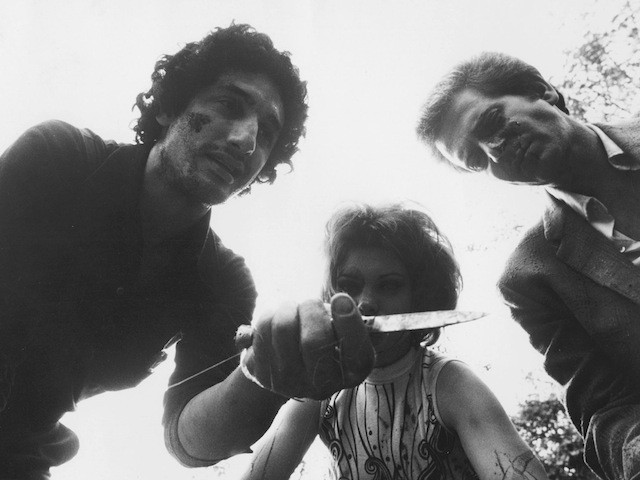Wes Craven At His Most Depraved
by Alexandra Molotkow

Wes Craven’s films stand out for how not weird they are. Unlike the other directors who shaped the modern horror movie — John Carpenter, Tobe Hooper — his don’t feel troubled or depraved at their center. They feel like horror movies.
Wes Craven was a true commercial artist, and he established a contemporary form so clearly that its rules became his fodder. He had a genius for entertaining: his work was full of character, but it always aimed to please. Even his strangest and most unsettling premises made sense — the violence was glazed with humor, or shown under the glass of convention. A Wes Craven movie contains gobs of horror, but very little malice. Only he could disembowel a former child actress without reminding you there’s evil in the world.
But before there was Scream, there was Last House on the Left, Craven’s first feature film. It stands out from the rest in that it’s genuinely horrifying — at the same time, it’s as funny and perversely life-affirming as the rest of his best work, and that’s unnerving. I’ve always felt sort of guilty for loving it the way I do.
Last House on the Left is a rape-revenge movie in which two girls are kidnapped by a group of freewheeling psychos, then raped, tortured, and murdered behind one of their parents’ suburban homes. It was a low-budget success — Empire writes that it earned $3 million on a budget of just under $90,000 — produced by a group of theater owners in Boston: “They used to commission low-budget films for their second bill,” Craven told the L.A. Times, “so they didn’t have to pay the studio for the second feature.”
Craven grew up in a strict Baptist family in Cleveland. He earned a Master’s in philosophy and writing from Johns Hopkins, and taught humanities at Clarkson College in Potsdam, New York, where he saw Ingmar Bergman’s The Virgin Spring, on which Last House is based. After moving to New York City, he worked on porno movies under a pseudonym, before getting the opportunity to make his own movie. “It allowed me to be bad for the first time in my life,” he said.
Last House on the Left was “supposed to be a hardcore movie, but — a disgusting hardcore movie,” Fred J. Lincoln, who plays Weasel, one of the movie’s villains, says in the DVD featurette (which is not online, unfortunately). “It was killing people and having sex with them, I mean it was absolutely hideous.” The original script featured snippets that would be ungenerous to reproduce in a Craven obit, but they are vile, unnecessarily vile, and strikingly so, for a man who’d go on to make movies for kids. I sort of love that.
The film was raw in its cruelty. As the Guardian writes, “Craven decisively removed everything that could have been mistaken as a genre signifier.” There are aesthetic flourishes: the villains are madcap and cartoonish, and the star baddie, David Hess, wrote and performed the hammy (but excellent) soundtrack, which dips into vaudeville at times. But in Last House, the worst happens, and then it gets worse. Beneath the camp is cold blood. There’s disembowelment, humiliation, everything that’s not supposed to happen in a major film.
In a short documentary, Craven talked about the scene in which a teenage girl is gutted:
When we cut for lunch, I remember that nobody said anything, and that for the first time all the joking was over… I just sort of felt like OK, we got to that place, and it’s good we got to that place, but that’s a horrible place. And that’s always been something I’ve juggled the rest of my career, places I went, we went, in Last House, I haven’t gone again and don’t really have a desire to go again. But somehow, for some reason at that time I felt like it was necessary… It’s unjustified, except that those things exist, and you know, art is about things that exist.
Horror films, as every horror fan will argue, are a safe place to park the evil. Over the years, Craven would become a master of the low-guilt horror flick: an expert on padding and polish. It’s almost as if, having done his worst to begin with, getting as close to real as was legal, Craven was able to retreat to a safer place. That safety is a gift, for the fan who has struggled to explain her horror proclivity to the version of herself searching for sexism in a piece of toast.
Thank you, Wes Craven.